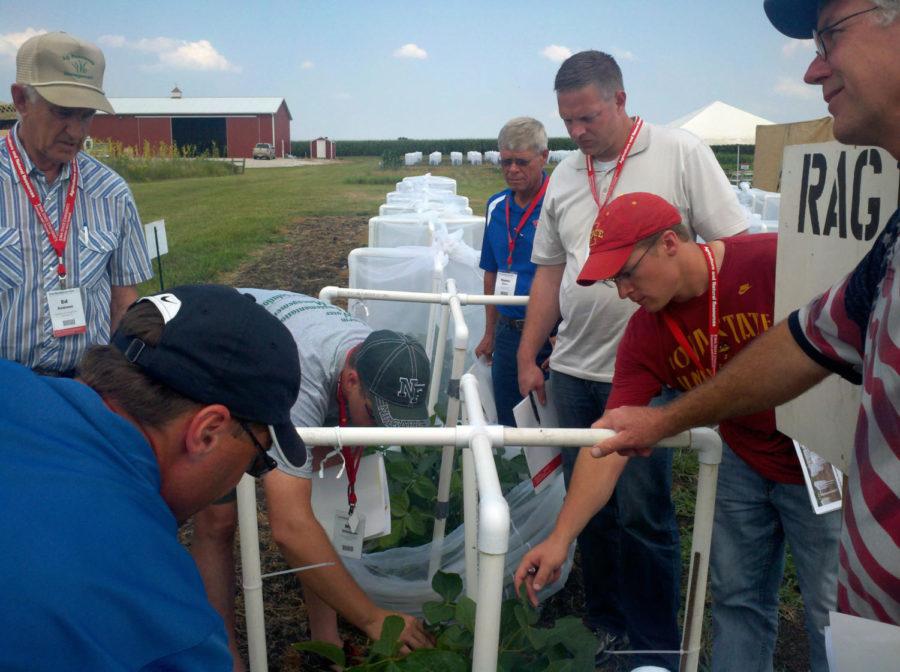ISU researchers study ways to combat aphids
October 25, 2012
After a year of drought, farmers are looking for any way to increase their yields, and research at Iowa State has found that good news may be on the horizon for soybean farmers.
The research is coordinated between ISU professors Gustavo MacIntosh, associate professor of biochemistry, biophysics and molecular biology; Greg Tylka, professor of plant pathology and microbiology; and Matt O’Neal, associate professor of entomology.
“What we’re really trying to find out are the interactions happening between pests and plants,” MacIntosh said. Together the three perform experiments involving soybeans and two of the biggest soybean pests: soybean aphids and cyst nematodes.
A recent study co-authored by MacIntosh has made the first steps in potentially stopping harmful pests such as the soybean aphid.
When the soybean aphid arrived in North America in 2000, farmers tried combating them with insecticide. The strategy was partially successful but was not a cure-all for the dangerous pest.
In order to combat the pest, farmers are forced to treat crops multiple times, which is costly and still does not always solve the problem.
The dangerous thing about the soybean aphid is not always the direct effect they have on the plant. MacIntosh said the aphids have the ability to override the natural defenses of soybeans, which opens the plants for colonization by other pests, such as the cyst nematode.
“This research allowed us to identify genes with potential to block [aphids].” MacIntosh said. The results of MacIntosh’s research identified approximately 1,000 genes that could defend against not only the soybean aphid, but possibly protect against new pests that arise in the future.
“If we can understand the mechanisms involved, we can start to solve the problem.” MacIntosh said.
The research is sponsored by the Iowa Soybean Association.
“I feel like I work for farmers,“ Tylka said. “I want to help farmers.”
Although the research is making strides, the researchers believe there is still more development needed.
“We have discovered resistance available, but it’s limited,” O’Neal said. “We don’t know how it works yet.”







